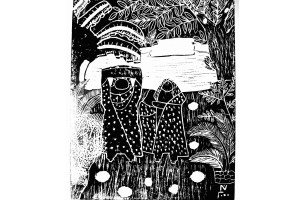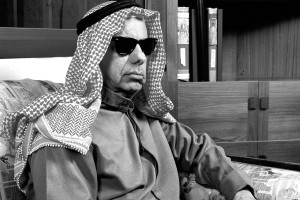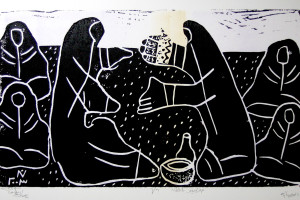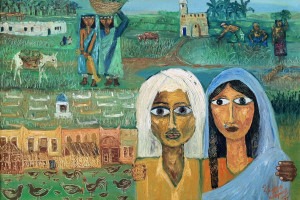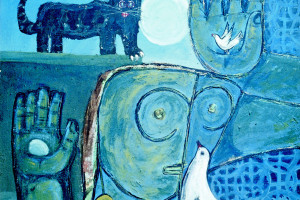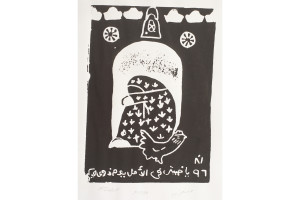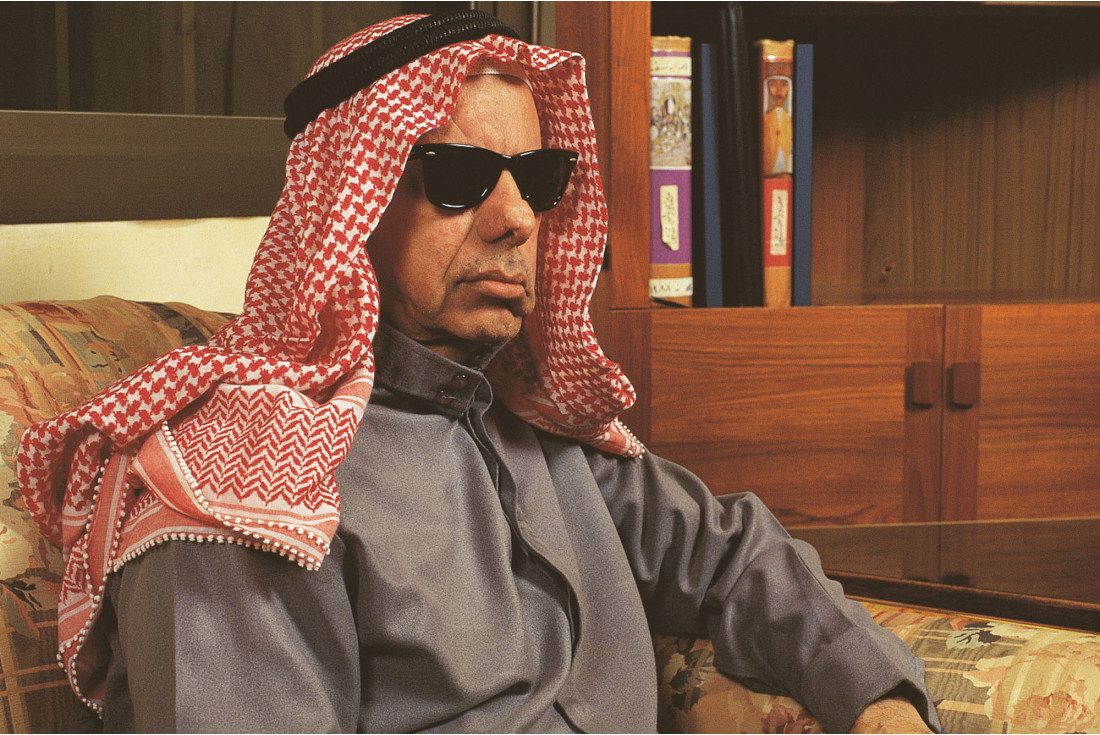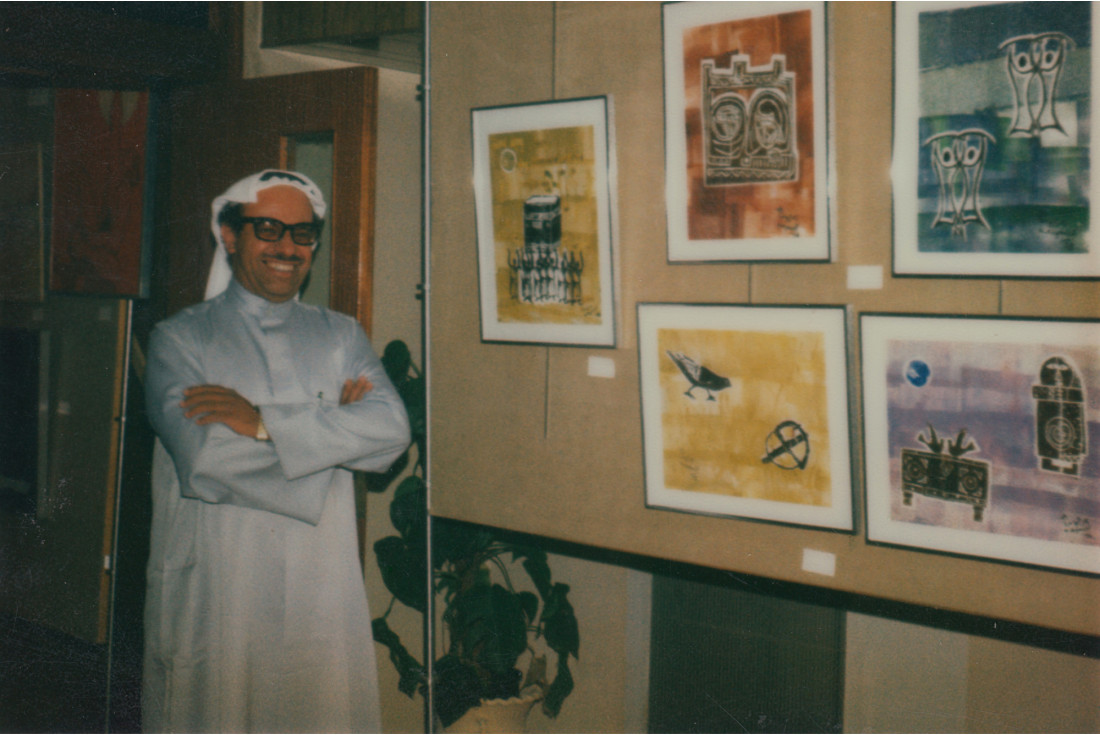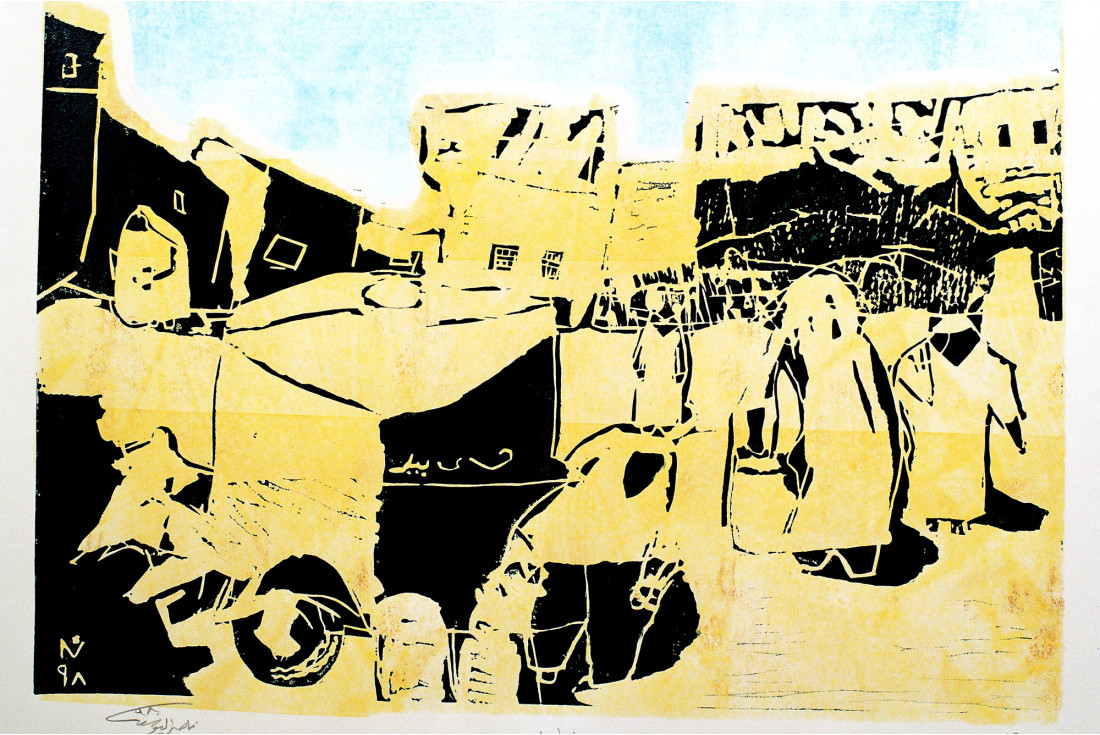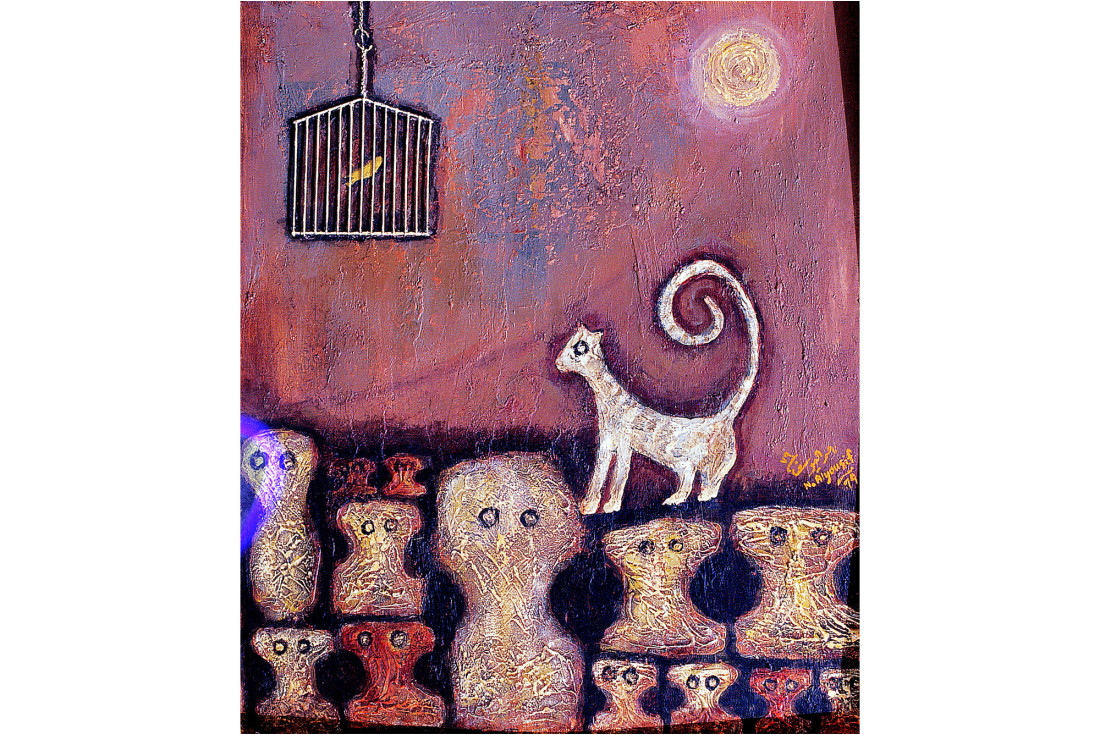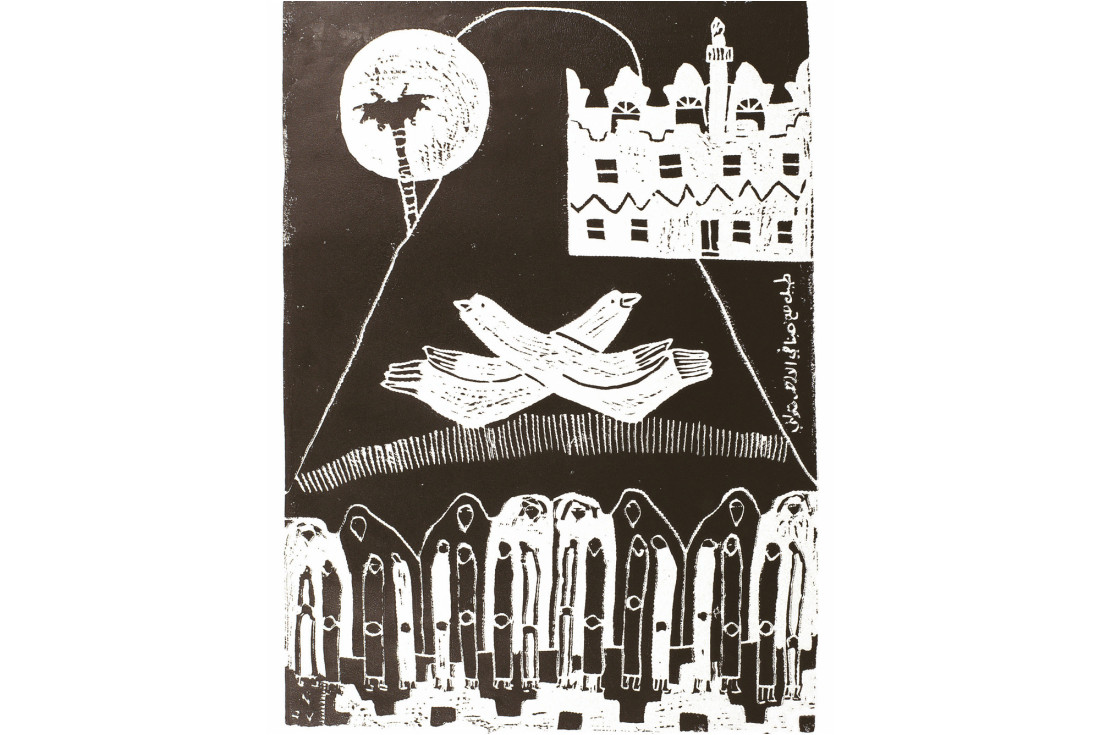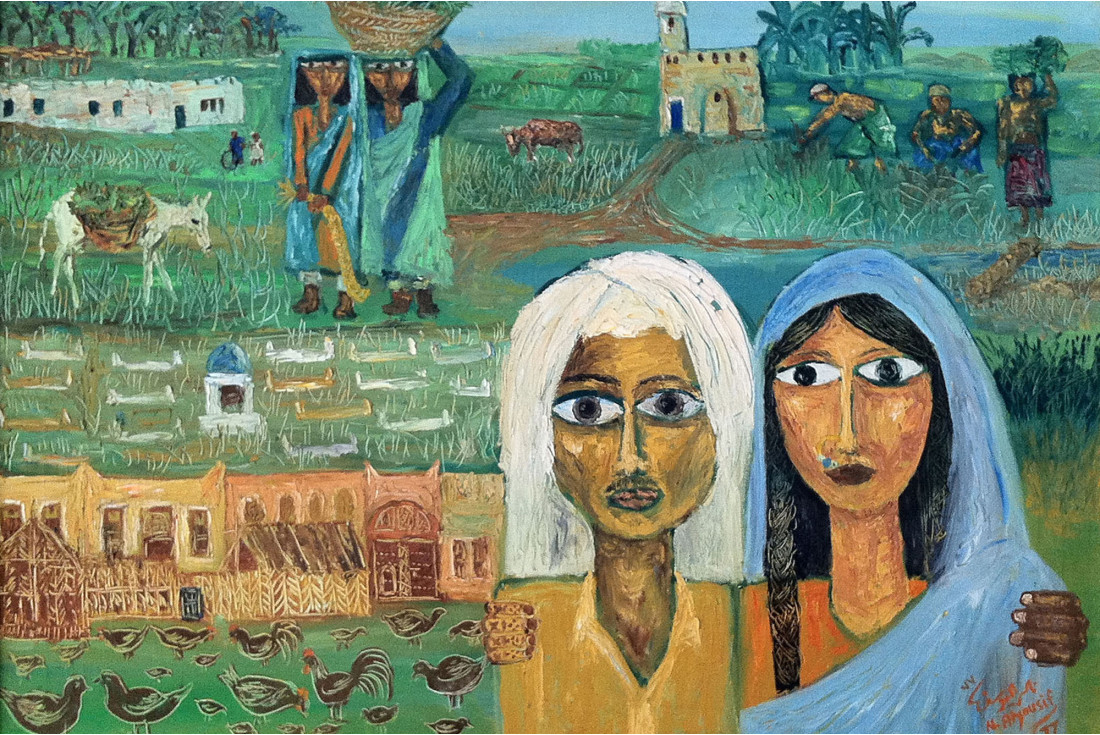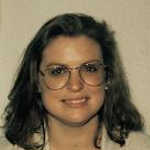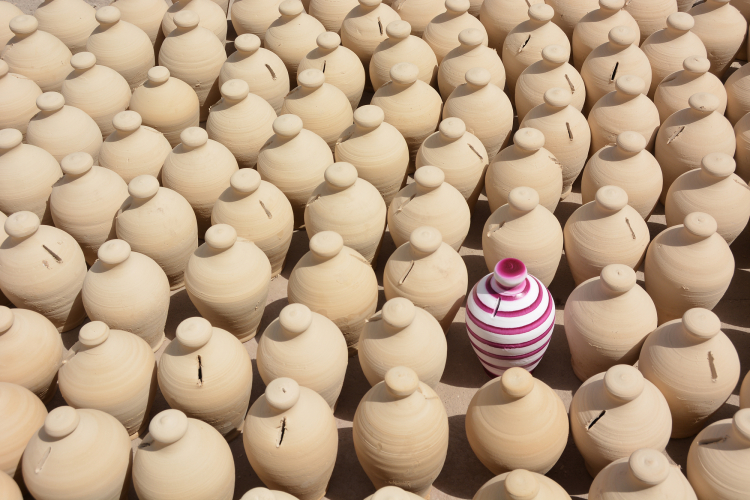Artist with unique vision
Bahraini artist Nasser Al Yousif has participated in countless exhibitions, has been honoured by art societies and praised by critics both in Bahrain and abroad. His work, which focuses on traditional Bahraini folklore, has won numerous awards and has been chosen to represent Bahrain in museums and embassies in the Gulf, Europe and the United States. He recently won the coveted Al Dana Prize, the top honour awarded at the country's annual Fine Arts Exhibition.
These are significant accomplishments in any artist's career, but they are even more impressive when you consider that Al Yousif will never see the work that has received such acclaim: he is totally blind.
Al Yousif was not born blind - he started to lose his vision in 1992 after undergoing radiotherapy treatment for a brain tumour. The radiotherapy, combined with diabetes, led to the gradual loss of his sight over about a year and a half.
His love of art started much earlier. Born in 1940, Al Yousif spent his early years living in Muharraq among the fishermen, ship builders and pearl divers. "At that time, I noticed everything around me," he says.
From a very young age, he was intrigued by shapes and designs in everyday objects, such as the old houses in his neighborhood. Although he claims "there is no beginning for an artist," he does remember one specific incident when he was eight or nine years old that marked his first steps toward his chosen profession.
"One day when I was walking with my father, I asked him about the gypsum (clay) patterns on the houses," he explains. "I asked him what it was and how it was made."
His father took him to a craftsman to show him. When he went home, he asked his father for some clay to design his own decorations, but his father refused.
"I escaped from the house and asked for some from the craftsman," he continues. "I started to make shapes on the wall of my house. My father was surprised when he saw what I had done, but he allowed me to continue."
From that day on, he began storing images in the back of his mind, folkloric images that later became the subjects of his paintings and etchings. "Dancing women, children, clothes, the sea, traditional ceremonies, habits of the people... I looked at all these things," he says.
At age 11, his family moved to Manama. There, Nasser attended school, taking a particular interest in art and drawing things he remembered from childhood. In secondary school he started to become more serious about his art, sharing ideas with friends who were also fellow artists. "(Our group) walked through all the villages in Bahrain, collecting ideas for our paintings," he recalls.
He later became an art teacher and, after 13 years, retired and went into business with his brother to start the Arabian Glass and Mirror Company - but continued painting as much as possible.
Between the early 1970s and 1992, he became a well-known artist in Bahrain, participating in many exhibitions and becoming president of the Bahrain Art Society in 1983.
"He really made his mark on the art society here during that time," says his son, Jamal.
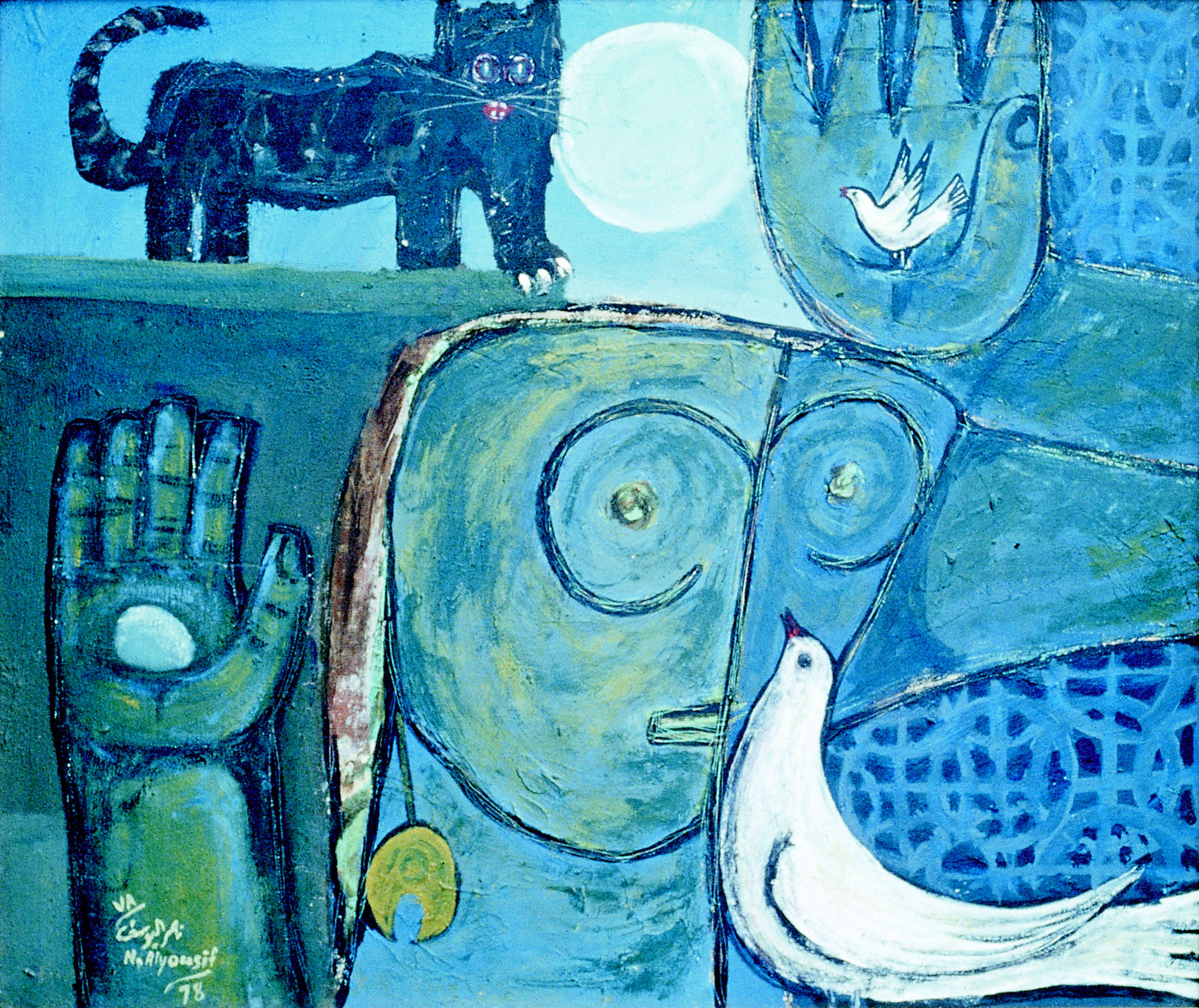
Nasser Al Yousif' s painting
In his early career, he tried many different styles, but chose acrylic as his favourite medium and used this for most of his works. One of the methods he experimented with, however, was lino etching, in which an artist carves designs into a piece of linoleum, covers it with paint and transfers it onto paper.
When he lost his vision, Al Yousif discovered he could continue his art through this method, but it wasn't easy.
Lino etching is an intricate process, one that is painstaking for even those who can see what they are doing. For Al Yousif, however, it is even more difficult, but it has become his labour of love. He first cuts out the shapes on paper, with only his fingers to guide him. Then he transfers these designs to the linoleum, outlining them and then carving them out with a special tool.
Explains Jamal: "Since he had used this method before, he could go back to it and adapt it to transfer the visions in his mind to paper."
It takes Al Yousif about three weeks to complete one etching. He works from early morning to night, with help only from his wife, who assists with the cutting of the paper shapes and mixing colours.
His etchings, which for the most part still feature traditional folkloric subjects, are actually receiving more praise than his earlier paintings.
"The loss of his sight has not handicapped his ability to run his hands over his paintings and to produce distinctive works," wrote one critic.
Ironically, it is the fact that he is blind that makes his art so unique. Without any outside influences to distract him, Al Yousif is able to create art that is one-of-a-kind.
"He is working in a vacuum," says Jamal. "He doesn't see anyone else's work so what he creates is uniquely his."
Jamal is rightly proud of his talented father, as is the rest of the family - another three sons, two daughters and nine grandchildren.
Al Yousif says he has no illusions of ever regaining his sight, but he is content to keep creating his unique art for as long as possible.
Thousands of auto racing fans from around the world are expected to descend on Bahrain as the island prepares to host the first ever Formula 1 race to be held in the Middle East. Grand Prix organisers have pencilled in April 4, 2004, as the likely date for the country to host one of the world's biggest and most watched sporting events.
* Published in Visitor’s Complete Guide to Bahrain 2001





